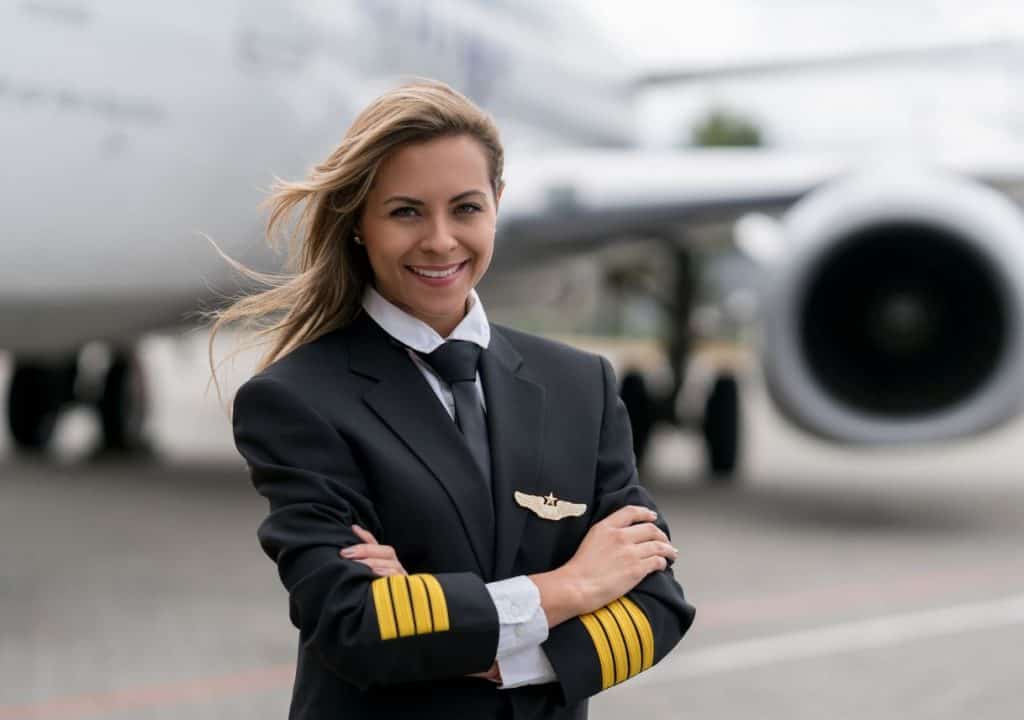The dream of soaring through the skies and commanding an aircraft has enticed countless individuals to pursue a career as a pilot. This captivating profession offers a unique blend of adventure, responsibility, and technical expertise. Pilots are entrusted with the safety and well-being of their passengers, navigating through the clouds with precision and skill. If you’re someone who finds joy in the awe-inspiring wonders of aviation, pursuing a career as a pilot can be a deeply fulfilling endeavor.
Becoming a pilot is not just about learning to fly; it involves a comprehensive journey of knowledge acquisition, practical training, and personal growth. From understanding the principles of flight to honing your decision-making skills, every step along the way contributes to your development as a competent aviator.
Table of Contents
Discovering Your Passion for Aviation
Aviation is a world that captivates and inspires, drawing in individuals with a deep fascination for the wonders of flight. The first step on the path to becoming a pilot is to explore and understand your passion for aviation. Reflect on what draws you to the skies.
Is it the thrill of defying gravity, the desire to travel the world, or the awe-inspiring nature of aircraft? Engage with aviation communities, attend airshows, and immerse yourself in aviation literature to further fuel your passion.
Consider taking an introductory flight lesson to experience the sheer exhilaration of piloting an aircraft firsthand. This will provide a glimpse into the world of aviation and help you determine if pursuing a career as a pilot is the right fit for you.
Talk to experienced pilots, join online forums, and seek mentorship opportunities to gain insights into the realities and challenges of the profession. Discovering your passion for aviation is the foundational step that will guide you on your journey to the skies.
Understanding the Different Types of Pilots
The world of aviation offers a wide range of career paths and opportunities, each with its own unique demands and rewards. It’s essential to understand the different types of pilots to determine which avenue aligns with your aspirations. Some of the common types of pilots include:
– Airline Pilots: These pilots operate commercial flights, transporting passengers and cargo on scheduled routes. They often fly larger aircraft and work for major airlines.
– Corporate Pilots: Corporate pilots are employed by private companies or individuals to fly their executives, ensuring efficient and safe travel.
– Military Pilots: Military pilots serve in the armed forces, flying combat or transport missions and supporting national defense objectives.
– Cargo Pilots: Cargo pilots focus on transporting goods and freight, often operating for cargo airlines or courier companies.
– Helicopter Pilots: Helicopter pilots navigate rotary-wing aircraft, performing tasks such as emergency medical services, aerial photography, or search and rescue.
By understanding the different types of pilots, you can identify the specific career path that aligns with your interests, lifestyle preferences, and long-term goals.
Education and Training Requirements
Becoming a pilot requires a combination of academic knowledge, practical training, and flight experience. While educational requirements may vary depending on the country and type of pilot license you seek, a high school diploma or equivalent is generally the minimum requirement.
However, pursuing a college degree in aviation or a related field can provide a solid foundation and enhance your employability. If you are considering becoming a pilot at Jetblue Airlines, be sure to know that flight training is a crucial component of becoming a pilot.
It typically involves ground school instruction, flight simulator sessions, and hands-on flying experience. Flight schools approved by aviation authorities offer comprehensive training programs that cover topics such as aerodynamics, navigation, meteorology, aircraft systems, and emergency procedures.
Selecting the Right Flight School
Choosing the right flight school is a critical step in your journey to becoming a pilot. With numerous options available, it’s essential to consider several factors before making a decision. Look for flight schools that are accredited, reputable, and have a strong track record of producing skilled pilots.
Evaluate the curriculum and training programs offered by different flight schools. Ensure they align with your goals and cover the necessary topics to meet the requirements for your desired pilot license. Research the qualifications and experience of the instructors, as their expertise will greatly influence the quality of your training.
Consider the location and facilities of the flight school. An ideal location would provide a conducive environment for flying, with access to diverse weather conditions and airspace. Facilities such as well-maintained aircraft, flight simulators, and a supportive learning environment can enhance your training experience.
Building Flight Experience
Flight experience is crucial for pilots, as it not only enhances their skills but also helps meet the requirements for various pilot licenses. Building flight experience involves actively seeking opportunities to accumulate flight hours and broaden your aviation knowledge.
Consider becoming a flight instructor, as it provides a unique opportunity to refine your flying skills while teaching others. Flight instruction allows you to reinforce your knowledge, develop effective communication and leadership skills, and deepen your understanding of aviation principles.
Another avenue to gain experience is through volunteer work or internships with aviation organizations. Many aviation events, airshows, and aeroclubs offer volunteering opportunities that allow you to engage with aviation professionals, network, and immerse yourself in the aviation community.
Additionally, consider joining aviation associations and organizations relevant to your desired career path.
Navigating the Licensing Process
Obtaining the necessary licenses and certifications is a crucial step on the path to becoming a pilot. The licensing process may vary depending on the type of pilot and the jurisdiction you are in, but generally follows a similar framework.
The first milestone is obtaining a private pilot license (PPL), which allows you to fly aircraft for personal use. This license involves meeting certain flight hours, passing written and practical exams, and satisfying medical requirements. The PPL serves as the foundation for further training and certification.
To advance your career prospects, you can pursue additional ratings and endorsements, such as an instrument rating (IR), multi-engine rating (ME), or a commercial pilot license (CPL). These certifications expand your flying capabilities and allow you to fly in more challenging conditions, operate larger aircraft, or fly for compensation.
Pursuing Advanced Certifications and Ratings
Once you have obtained your initial pilot license, there are numerous opportunities to pursue advanced certifications and ratings that can enhance your skills and expand your career options.
These additional qualifications allow you to specialize in specific areas of aviation and demonstrate your expertise to potential employers. One notable certification is the instrument rating (IR), which enables you to fly in conditions with limited visibility, such as low clouds or fog.
This rating equips you with the skills to rely on instruments for navigation and control, increasing your versatility as a pilot.
If you aspire to fly for airlines or engage in commercial operations, obtaining a commercial pilot license (CPL) is essential. A CPL permits you to fly for compensation or hire and opens doors to various career opportunities, including airline pilot positions.
Other ratings and endorsements you may consider include multi-engine rating (ME), allowing you to fly aircraft with multiple engines, and flight instructor certificates, which enable you to teach and mentor aspiring pilots.
Job Opportunities and Career Paths
The aviation industry offers a broad range of job opportunities and diverse career paths for pilots. Understanding the different avenues available can help you navigate your career with purpose and set realistic expectations.
Commercial airlines provide one of the most sought-after career paths for pilots. From regional carriers to major international airlines, these companies offer positions as first officers and captains on various types of aircraft.
Advancement opportunities, such as upgrading to larger aircraft or becoming a training captain, can further enrich your career.
Corporate aviation presents another exciting option. Many corporations employ pilots to fly their executives and employees, providing a dynamic and challenging work environment. Corporate pilots often enjoy a greater variety of destinations and schedules, along with the opportunity to build close relationships with their passengers.
FAQ Section
Can anyone become a pilot?
Becoming a pilot requires meeting certain criteria, such as age, medical fitness, and educational requirements. However, with dedication, proper training, and meeting the necessary qualifications, anyone who is passionate about aviation and willing to put in the effort can pursue a career as a pilot.
How long does it take to become a pilot?
The time required to become a pilot can vary based on several factors, including the type of pilot license, training program, and individual progress. It typically takes several months to a few years to complete the necessary training and accumulate the required flight hours. Factors such as scheduling, weather conditions, and personal commitments can influence the overall timeline.
Is flight training expensive?
Flight training can be a significant financial investment. The cost varies depending on factors such as the flight school, location, aircraft rental fees, and instructional materials. It’s important to research and plan for the expenses associated with flight training, including tuition, flight hours, exams, and additional fees. Some flight schools offer financing options or scholarships, and it’s worth exploring those opportunities as well.
What are the medical requirements to become a pilot?
To become a pilot, you must meet the medical standards set by aviation authorities. A medical examination conducted by an aviation medical examiner is required to assess your physical and mental fitness. The specific requirements depend on the type of pilot license you are pursuing. It’s advisable to consult with an aviation medical professional to understand the specific medical requirements for your desired pilot career.
Can I become a pilot if I wear glasses or contact lenses?
Visual acuity requirements for pilots vary depending on the jurisdiction and type of pilot license. Many pilots wear corrective lenses, such as glasses or contact lenses, to meet visual standards. However, there may be limitations or specific requirements regarding vision correction. Consult an aviation medical examiner to determine how your vision correction may impact your eligibility to become a pilot.
Conclusion
Embarking on a career as a pilot requires dedication, commitment, and a love for aviation. By following the steps outlined in this article, you can set yourself on a course toward achieving your dream of flying high in the sky.
Remember, the journey to becoming a pilot may be challenging, but the rewards are immeasurable. Embrace the excitement of learning, take advantage of every opportunity to gain experience, and keep your eyes on the horizon.
Whether you aspire to become a commercial pilot, fly for a private company, or join the military, the sky is the limit. So spread your wings, seize the opportunities that come your way, and let your passion for flight guide you to a fulfilling and successful career as a pilot.



